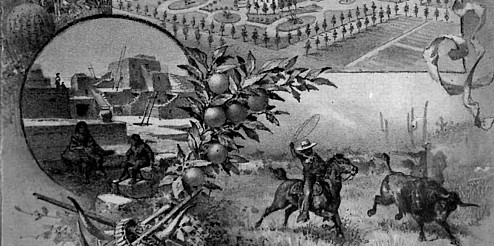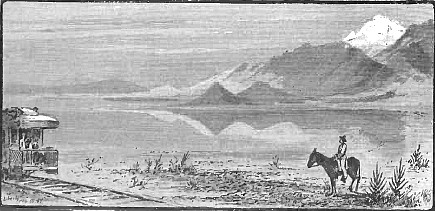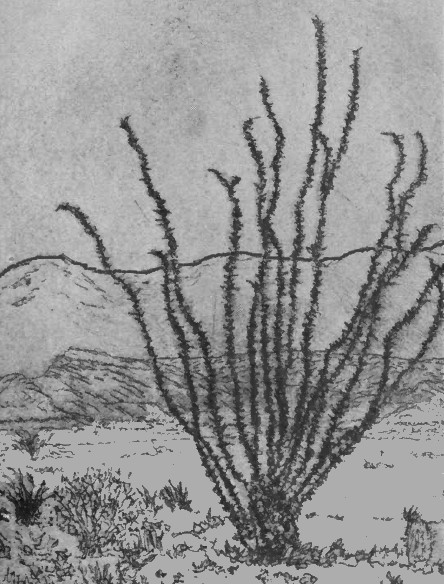In 1872 the alleged discovery of diamond-fields in Arizona created a great excitement throughout the nation. A report went out in all the newspapers across the nation. Arnold and Slack were the discoverers. These splendid diamonds and rubies were exhibited in New York and San Francisco. Well known operators including Harpending, Lent, Roberts, Dodge, and other capitalists became sponsors for the exploitation of this great new find. Henry Janin visited the fields as an expert, reporting them to rich in diamonds; a company with a capital of ten millions was formed, with such men as Latham, Selby, Ralston, Sloss, Barlow, and General McClellan as directors. The land title to 3,000 acres was obtained and large sums were paid for interests in the scheme. All was made ready, not only to work the claim, but to offer the stock in the operation to a credulous and excited public. Meanwhile the papers continued to be full of the matter, though there was less excitement actually in Arizona than was found elsewhere. A dozen parties visited the fields, some connected with the Harpending Company, and others not. Most of them were able to find the spot without any particular difficulty, and brought back a variety of beautiful stones. All agreed that the place was in the region of Fort Defiance, some locating it across the line in New Mexico, but most in the extreme north of Apache county, near the junction of the Chelly and San Juan, where the inscription Diamond Fields is still to be seen on some relatively modern maps. Arnold, however, said the spot was south of the Moqui towns near the Colorado Chiquito.
A company with a capital value of $10,000,000 was hastily organized in San Francisco for the exploitation of a new diamond field located somewhere north of Port Defiance in Northeastern Arizona. The reputed discoveries of the field were made by a couple of local individual prospectors by the name of Arnold and Slack, who exhibited their finds in New York and San Francisco, showing off some magnificent rough diamonds and some very good quality rubies - two gemstones not normally found together. The San Francisco company included a number of the wealthiest men of the city, including some with large amounts of experience in the mining industry.
They sent out some agents who returned with more diamonds, picked up from the surface of the ground. It was just the location of the find that seemed to be in dispute, however, for it was told publicly that locations made north of Fort Defiance were merely for the purpose of diverting attention from the true site, when in reality the field whence the diamonds came was south of the Moqi villages. In truth the whole scheme was nothing more than a fraud perpetrated on a gigantic scale.
The lie was uncovered by Clarence King, the noted western geologist, who first demonstrated that the diamonds were not all of the same character, bearing characteristics of stones found on both of the South African and Brazilian fields. King visited the Arizona field and confirmed his own belief that it had been salted with stones brought from abroad. It was clear to him that the new claim had been artfully 'salted' with rough diamonds from Africa, Brazil, and other parts of the world.
It is probable that the two diamond field "discoverers" were merely tools of some very wealthy men, who expected not only to get back the gems that had been "planted," but to reap a fortune by selling stock to the unwary small investor. Fortunately, King’s public exposure of the sham came in time to prevent the more extensive swindling of the general public. Of the capitalists involved, it was unclear who among them were victims that lost and who were the culprits. No one spoke out and it was never exactly known. Those mining men who were defrauded did not wish to publicly admit they had been so thoroughly fooled with such a simple and fraudulent story. The point of the whole matter, however, lies in the fact that, while in all that was written, it was the Arizona diamond fields that were described, and the 'Arizona diamond swindle' that was denounced, not only were there no diamonds in Arizona, but the salted claim was actually located in north-western Colorado, hundreds of miles from the Arizona line.
Years later there was another fake diamond "discovery" down on the Gila, not far from Yuma, but this was on a much smaller scale and excitement died even more quickly. However almost a century later a number of real diamond bearing kimberlite pipes were found in and confirmed Colorado.
A BASKET SOON EMPTIED
Another of the few ephemeral boom camps of Arizona was Quijotoa, located
sixty-five miles west of Tucson, by the side of a mountain shaped like a
basket, the name coming from the Papago word, "kiho," meaning basket. The
first locations were made early in 1879 at the bottom of the hill, renamed
Ben Nevis by the Scottish Alexander McKay, one of the area pioneers.
May 11, 1883, Chas. Horn or McKay discovered
rich croppings at the summit of the hill and then the excitement began. It
was claimed that five tons of the ore gave a return of $2,500 at the Benson
smelter. Tunnels were started into the hillside to cut the ledge at depth,
but failed, for there was no ledge. In the language of a San Francisco
mining man, the deposit was "merely a scab on top of the mountain." McKay
did give a bond on the property to the Flood-Fair-Mackey-O 'Brien syndicate
of San Francisco at a price of $450,000, but the option was not taken up at
maturity. A half-dozen companies were formed in San Francisco, each with ten
million dollars capitalization, for the working of the Quijotoa mines, and
the news went broadcast that in Arizona had been found another Comstock.
As a result, thousands of men flocked in, despite warnings that the mines were only in the development stage. Around the original Logan townsite were four or five additions. In January, 1884, at Quijotoa, were only a couple of tents, ten miles from water. Two months later, several thousand people had come and there were many marks of a permanent town, including a weekly newspaper, "The Prospector," published by Harry Brook. The time the boom broke is indicated best by the fact that the printing office was moved to Tucson in the fall of 1884. Soon thereafter, J. G. Hilzinger of Tucson bought the mines, a mill that had been moved over from Harshaw, and all the other property of the principal corporation for $3,000.
Return
to The Arizona Page:
Arizona Gold Rush Mining History




